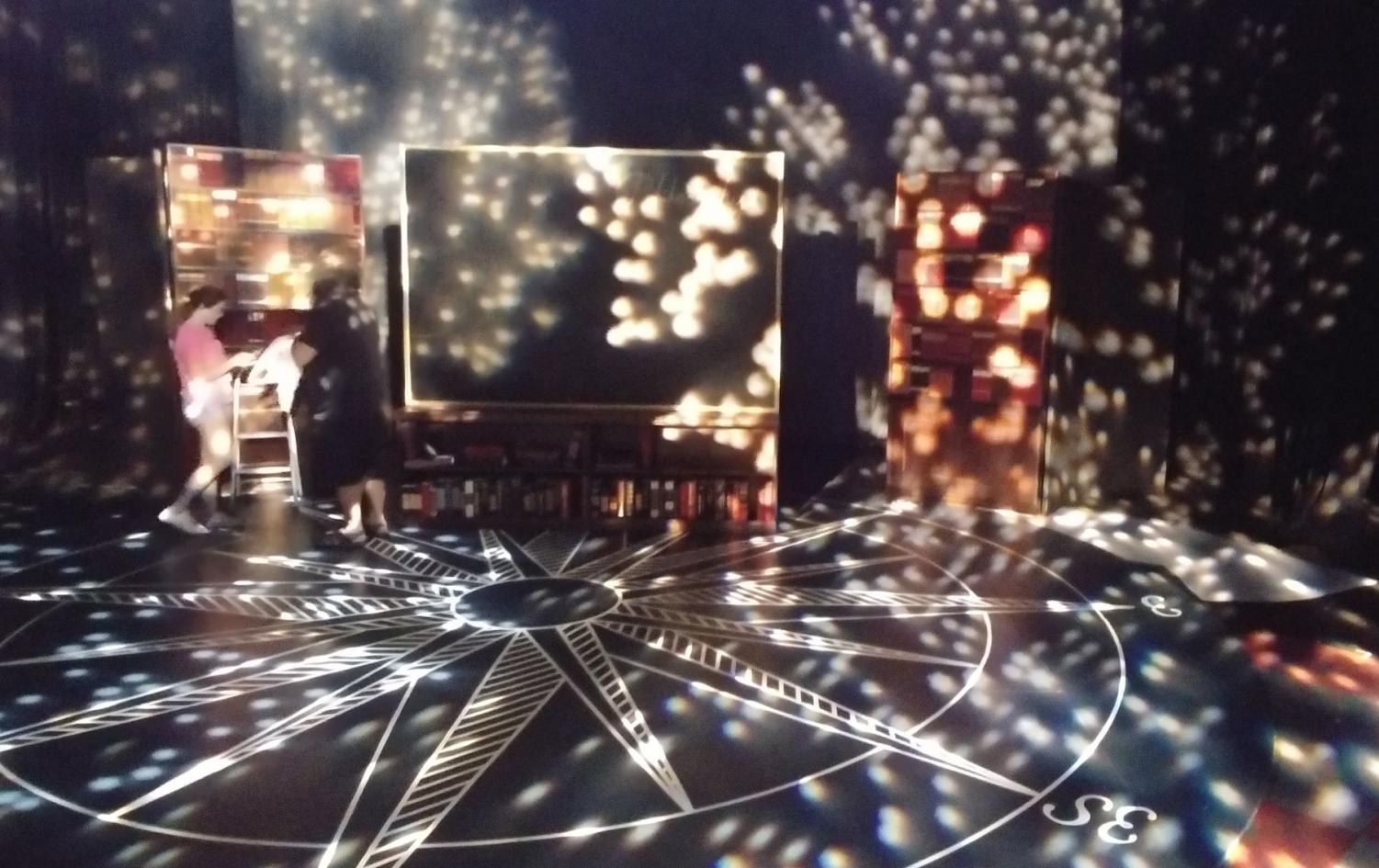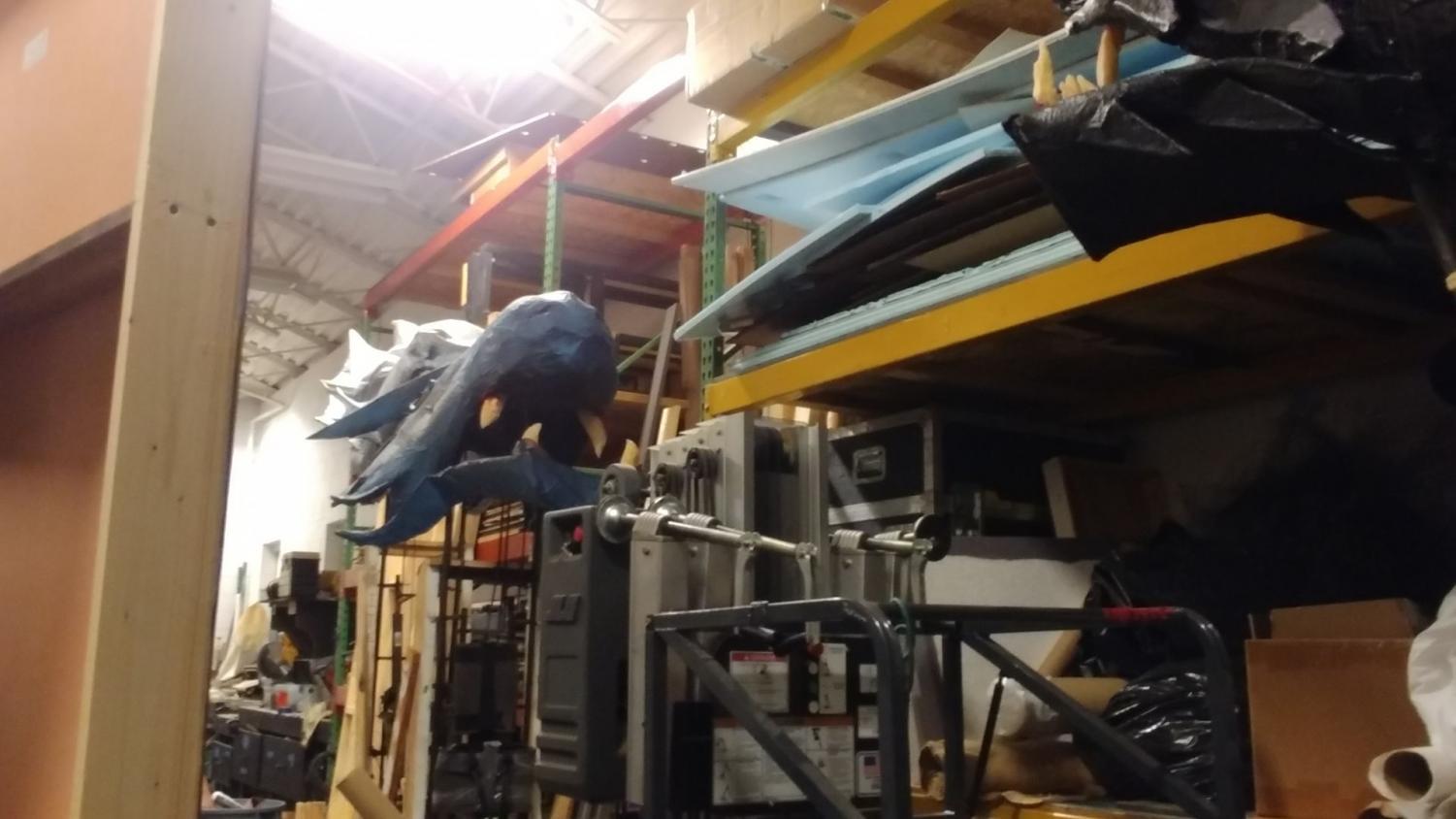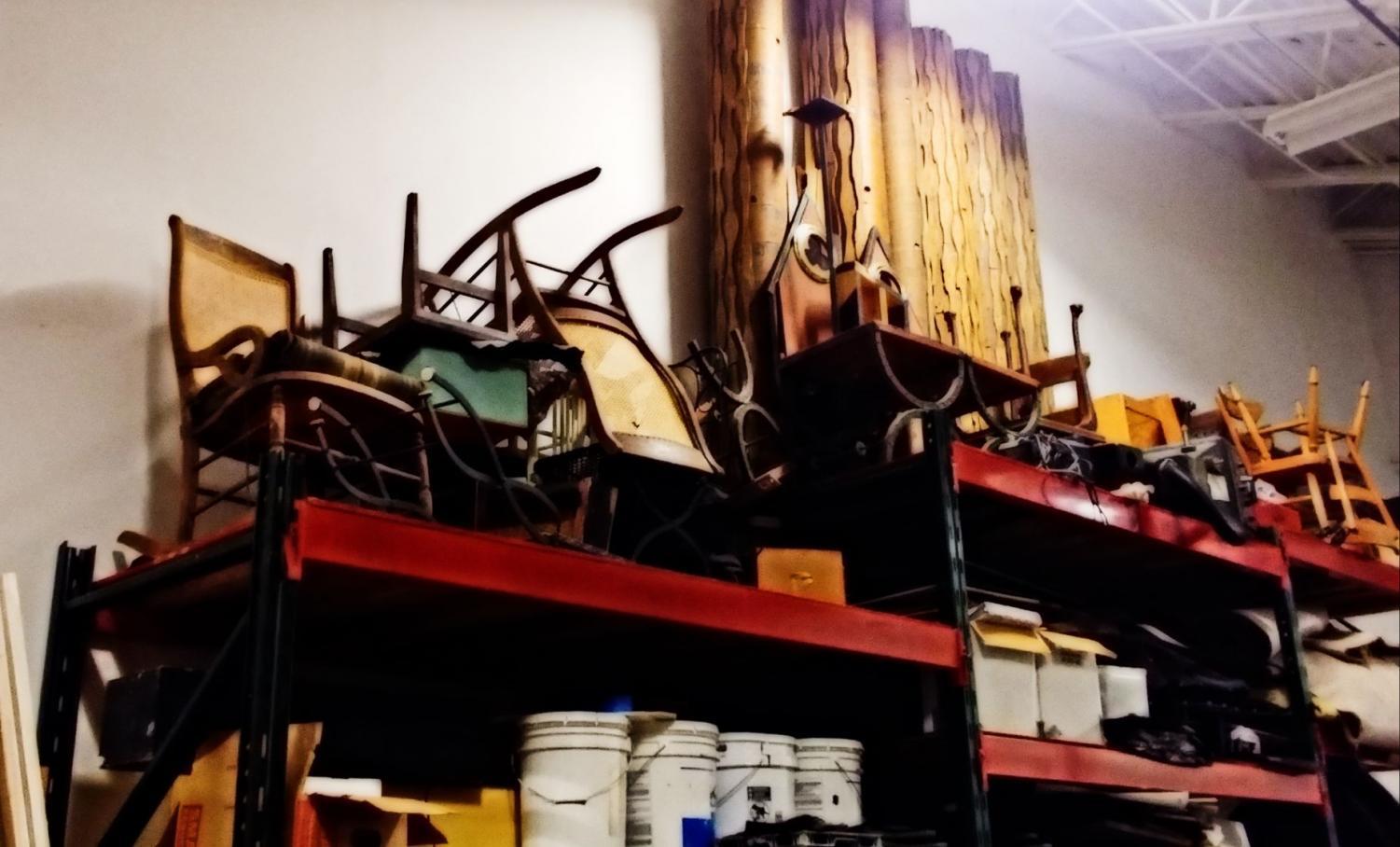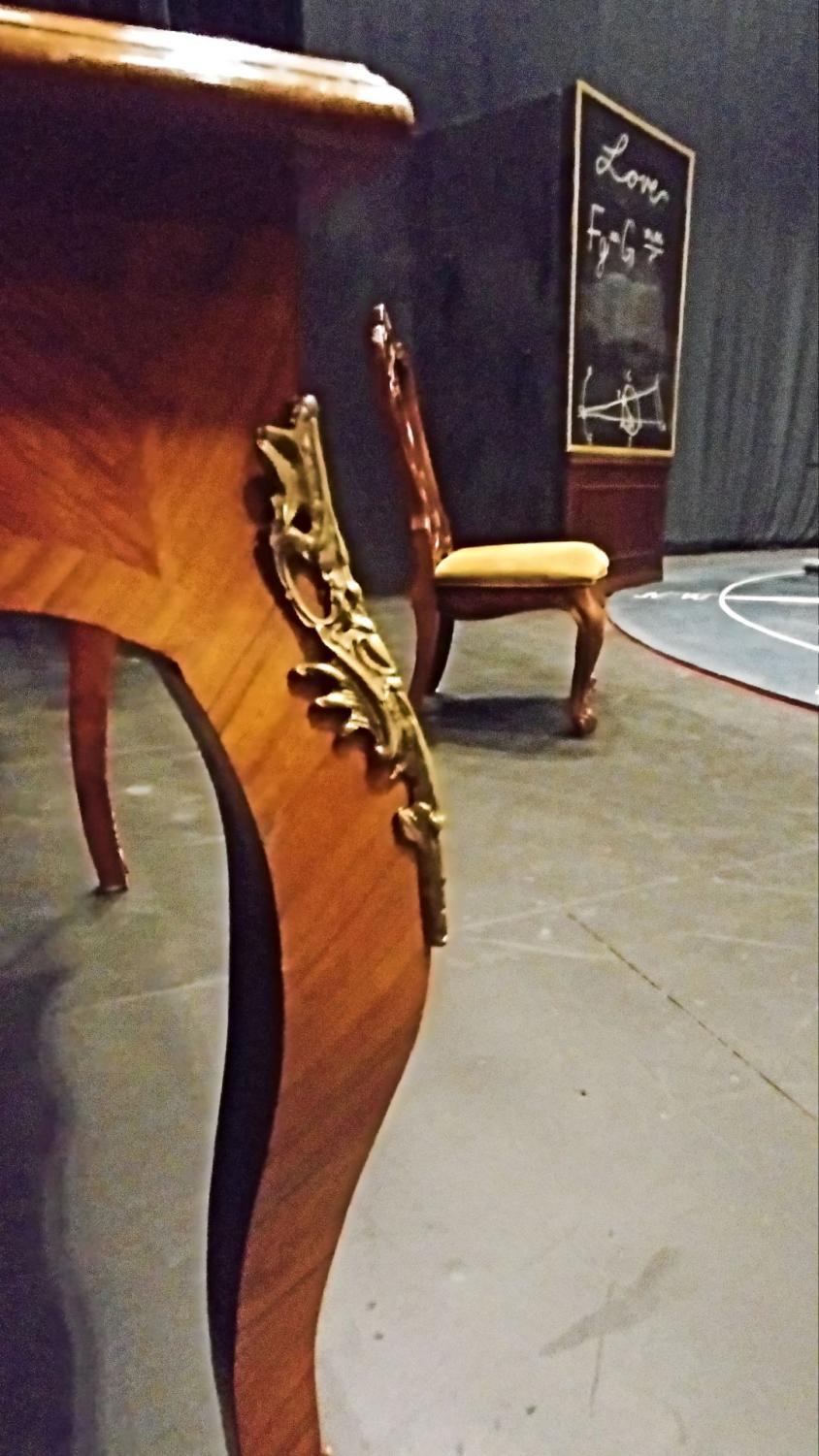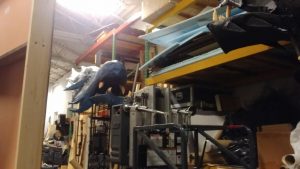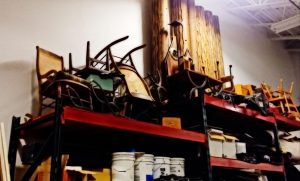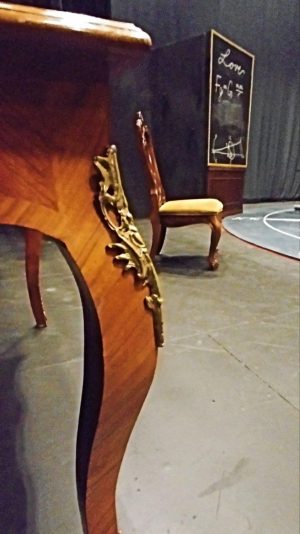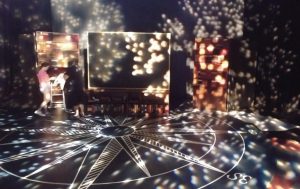Bringing Émilie to life: The magicians behind the theater department
September 27, 2018
There is not a lot of walking room in the theatre department scene workshop. Only someone with years of accumulated practice could navigate their way around giant lifts, old props and slabs of lumber lying about.
Among the dusty relics of theatre seasons past is a small, unblemished poster of “Émilie: The Marquise Du Chatelet Defends Her Life Tonight,” the theatre program’s first show of the season and the production team’s next great adventure.
There are many roles needed to create such an elaborate and historical production. Every role, however, from the researchers to the prop designers, are a crucial and magical part of putting on a play like “Émilie.”
One such role is that of the theatre/scene shop manager, Sean Devine. Devine’s guidance and visions help mold the scenes within the theatre program into spellbinding creations.
It’s a family affair
The process begins when the faculty of the theatre program pick the shows that will run that season and pass the decisions on to the production team, a group of about 10 people, including students and faculty.
“We try to get students involved in the design process as much as we can,” Devine said. “That’s what they’re learning about.”
Six students work in the scene shop with Devine where they build and weld a majority of the scenes, while another four work in the costume shop.
Once these decisions are made, the production team collaborates with the director to create an overall vision for the show, Devine said.
“From there, it’s all about research,” Devine said. “Sometimes the director may have a metaphor in mind that encapsulates the show, so the designers take that metaphor and work with it. It’s different every time.”
For the play’s set designer, Abby Hutcheson, production for “Émilie” started when she began doing research and making sketches for the production over the summer. Her process includes working one-on-one with the director to put together colors and inspiration images.
“It’s a lot about assembling and making sure the director’s vision and the set designer’s [vision] is seen,” Hutcheson said.
Hutcheson said that most of the set building for shows is completed in four weeks.
“A lot of [pieces] are custom made,” Hutcheson said. “It depends on what the piece is and what specifically we’re looking for. Some plays call for really specific pieces that either can’t be built in time or with the correct detail. It would be easier and better to just go find [the piece].”
Hutcheson said to save time, stock items such as furniture pieces and dishware can be brought from storage and repurposed to fit the theme of the play. At the end of each play, certain props can be rented out to other productions in the community.
Lights, catwalk, action
Inside the Black Box Theatre is senior theatre major Mary Flott, who barely flinches as she is consumed by the overhead theatre lights. As “Émilie’s” lighting designer, she spends the majority of her time scaling through the steel catwalk looming over the Whitaker Black Box Theatre, hanging fixtures and adding color gels to lights to enhance the story’s atmosphere.
“[My job] as light designer is to essentially tell the story [of “Émilie”] with light,” Flott said. “I often have to read through the script several times to [understand] how the story will be told.”
Her cues and color choices not only help one scene transition to the next but also help set the early 18th-century mood.
“I start designing, and from there I talk with the director [about] what mood or what message we want to send to the audience, and how that message can be seen through lights,” Flott said. “That way when it comes to the overall production, we have a cohesive design that positively reflects the other design elements.”
Multiple lines, multiple designs
Below Flott’s catwalk domain is sophomore theatre major Joey Hukin who, along with working in the scene shop, will play the lead character in “Émilie”.
Hukin helped build two rotating bookshelves and the stage for “Émilie” and said that building the production is just as exciting as starring in it.
“It’s incredible,” Hukin said. “I feel like I’m not just an actor anymore. It’s so cool working on a stage that I put together.”
Being a part of the production process is not only a way to experience the art of theatre first-hand, but also a way to meet passionate individuals who share the same appreciation.
Hutcheson said that working in the theatre department has not only helped her skills as a production assistant but as a team player in the world.
“It’s really a great way to learn how to work with a team and having it on your resumé,” Hutcheson said. “That’s something you can’t really teach people. It’s something you have to have, and you learn it in theatre.”
“Émilie” will run from Sept. 26 to Oct. 3. Ticket information can be found on the College of Art and Theatre’s website.
Shiann Sivell, The George-Anne Enterprise Reporter, gasepcial@georgiasouthern.edu



